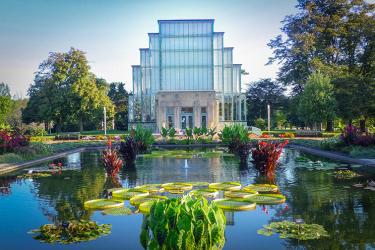The Arch is naturally the first thing that comes to mind when thinking of St. Louis architecture; any St. Louisan will agree that it should be the first stop on your architectural tour. However, St. Louis architecture deserves a deeper look.
In 1764, the designers of the newly established St. Louis based the style of the city on Montreal, a French settlement in Quebec, Canada.
The city’s buildings and homes were styled with French Hamlet roofs, wrap-around porches and a trademark sparkling white. However, the style quickly changed with the growth of river trade. After the devastating fire of 1849, which burned down over 430 buildings, St. Louis passed a code requiring every building to be made of either brick or stone.
This building code played a huge role in the budding architecture of the area. Private streets were built for the wealthy to find a sense of separation from the common population and commerce of the city. Vandeventer Place, a private street designed by Julius Pitzman, quickly became St. Louis’s most exclusive address during the late 19th century. The gates of Vandeventer Place still stand proudly in Forest Park by the Jewel box.
The Jewel Box is a locally significant piece of architecture itself. An art-deco style greenhouse, this location is a hotspot for weddings and events in Forest Park. With its eye-catching floral displays and glass walls, its no wonder Pitzman decided to build Vandeventer Place so close to it.
Julius Pitzman became one of the most renowned architects in the St. Louis area. He went on to design many other private streets such as Compton Heights, Washington Terrace and Parkview in St. Louis, and also served as the head engineer of the Forest Park project.
Looking for something a bit newer? Check out the newest building added to the national historic registry at 700 Market Street. Built by the famous architect Phillip Johnson in 1974, the building was vacated in 2004 and remained unused until being recently bought by Spire Energy, formerly the Laclede Group. The structure’s beautiful façade of windows and strong black columns will drawn you in; don’t worry, you won’t be disappointed once inside.
These are just a few of the architectural attractions of the area. Our Arch is just the gateway to the architectural marvels preserved for the enjoyment of visitors and locals alike.





